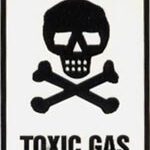CDC Report Says Language Barrier Caused Chlorine Gas Leak

In June 2011, a chlorine gas leak sickened nearly 200 people at a Tyson Foods plant in Arkansas. Workers fled from the plant after being exposed to the poisonous gas, which can cause respiratory problems, including irritated tissue and sudden death from narrowing of the upper airway.
Investigators interviewed 545 workers who were at the plant. Of those, 195 said they sought medical help and 152 of those were hospitalized. And three workers developed irritant-induced asthma.
The Centers for Disease Control and Prevention (CDC) recently released a report on its investigation of the incident. It found that the leak occurred because a Spanish-speaking worker who couldn’t read the English label on a 55-gallon drum of chemicals inadvertently poured bleach into it, creating the toxic gas. (Make sure you understand the workplace label requirements under WHMIS.)
In its Morbidity and Mortality Weekly Report, the CDC said the worker told investigators he knew such a mixture was dangerous but didn’t recognize the drum and couldn’t read the label to determine its contents.
The CDC also noted that although more than two-thirds of the plant’s workers spoke Spanish as their primary language and 12% primarily spoke Marshallese, a language spoken in the Marshall Islands, MSDSs were written in English at a college reading level.
The safety consequences of language barriers in the workplace are hardly unique to the US. Language issues are a safety problem that many immigrant workers face in Canada.
For example, an Ontario court found that language barriers may have played a role in a fatal scaffolding incident, noting that the company’s owner failed to ensure that non-English-speaking workers got written material in their native languages [R. v. Swartz, [2012] ONCJ 505 (CanLII), July 13, 2012].
For fatality reports on other safety incidents in which language barriers played a role, go to SafetyNow. (You’ll need to be a member or sign up for a trial membership to access this material.)
So how do you address language barriers in your workplace to ensure that all workers understand your safety training and materials and thus are adequately protected’
The CDC recommends that industries adopt safety training tailored to its workers’ language skills. Specifically, employers should:
- Engage workers in hands-on and interactive training
- Work with workers to analyze and improve workplace health and safety policies and programs
- Use symbols such as pictograms and simplified text.
Another option includes providing safety information in the languages spoken by your workers. In fact, some jurisdictions such as BC and Ontario provide a lot of safety-related materials in a wide variety of languages.